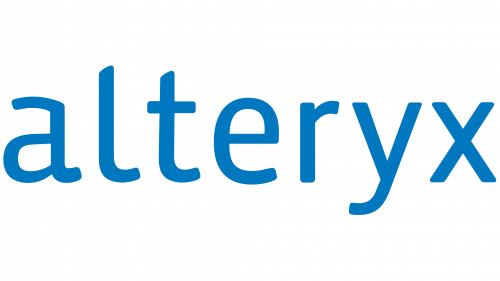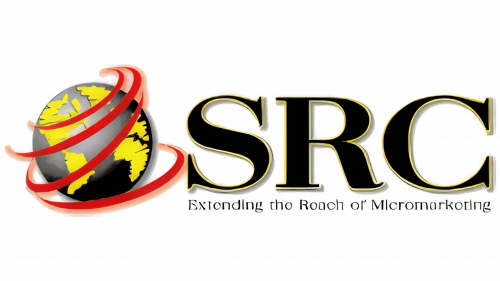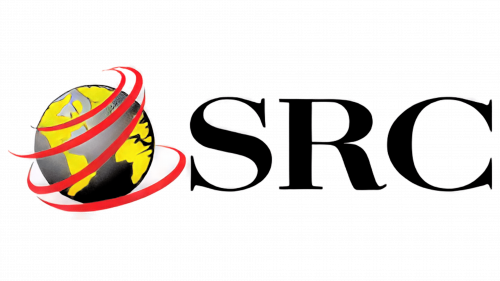The Alteryx logo symbolizes entry into the modern world of analytics, where data processing becomes accessible and understandable. This symbol conveys the essence of digital cloud technologies, which serve as the foundation for convenient and efficient management of large volumes of information. The software supported by the platform provides reliable tools for analysis, helping businesses make faster and better decisions. The emblem reflects the technological competence of the platform, offering optimal solutions for companies aiming for high productivity and efficiency.
Alteryx: Brand overview
Alteryx’s story began in 1997 when Dean Stoller and Olivia Duane founded SRC LLC in Orange County, California. Initially, the company focused on developing location-based data analytics tools and marketing services. At the time, geographic information systems (GIS) were just beginning to gain traction in various industries.
SRC LLC’s early goal was to create tools that allowed businesses to analyze geographic and demographic data for better decision-making. This approach was especially popular in sectors like real estate and retail. Throughout the 2000s, SRC LLC grew significantly, advancing its data analytics capabilities. The company launched its flagship product in 2006, a data analytics platform designed to make complex analytical tasks accessible to non-technical users.
In 2010, the company underwent a major transformation. As the platform gained popularity, SRC LLC officially rebranded, reflecting its shift from providing marketing services to focusing on its data analytics platform.
In 2011, the company secured $6 million in its first round of outside funding from SAP Ventures. This investment allowed the team to ramp up its marketing efforts and accelerate product development. Around this time, the focus on “self-service analytics” emerged, empowering business users to perform complex analyses independently without relying on IT departments.
By 2013, the platform had expanded significantly. The company introduced a suite of tools for business process improvement and predictive analytics, making the solution even more attractive to large enterprise clients.
2014, the business raised $60 million in Series B funding, fueling rapid growth. Using these resources, the company expanded its product development and global presence.
In 2015, the company launched the Analytics Gallery, a cloud-based platform for sharing and collaborating on analytics applications. This innovation made it easier for teams to work together on projects and helped the user community grow.
A major milestone came in 2017 when the company completed its initial public offering (IPO) on the New York Stock Exchange, valuing it at approximately $2.2 billion. This provided the funding needed for further growth and innovation.
In 2018, the platform continued to expand, introducing new tools for metadata management and cataloging to improve data accessibility within organizations. The company also launched a tool for deploying machine learning models into production environments.
The business followed a growth strategy through acquisition, as seen in 2019 when it acquired a startup specializing in automated machine learning, boosting its AI and machine learning capabilities.
The year 2020 brought both challenges and opportunities. The company strengthened its cloud solutions and remote work capabilities in response to the changing work environment. The company also enhanced its data management offerings through strategic acquisitions.
Between 2021 and 2022, the business continued to expand its product portfolio. The company introduced new cloud-based products and simplified the process of building and deploying machine learning models.
By 2023, the company had established itself as an analytics and data processing leader. It continues investing in its platform, integrating machine learning, AI, and cloud computing capabilities. The platform enables interaction with various traditional data sources. It can also process information from social networks like Twitter and Facebook and cloud applications such as Salesforce, Google Analytics, Workday, NetSuite, and Marketo. Leading brands like Coca-Cola, Walmart, and Gymshark trust Alteryx. These companies leverage Alteryx to streamline data analytics, automate complex workflows, and gain actionable insights that drive informed decisions and fuel business growth. Throughout its journey, the business has consistently adapted to the evolving demands of the data analytics market, growing from a small marketing company into a global leader in analytics and data processing.
Meaning and History
What is Alteryx?
This is a powerful data analytics platform that completely transforms the way companies use data. The software provider offers an intuitive interface that simplifies data tasks for business analysts and specialists—from data preparation to integration and analysis from various sources. One of its key advantages is the automation of complex operations, enabling users to create repeatable and collaborative workflows for teams. The platform makes data analysis accessible even to users without programming experience, thanks to its drag-and-drop functionality. Its capabilities range from basic data processing to advanced spatial analytics and predictive modeling.
1997 – 2008
The first Alteryx logo was closely tied to the company’s original name—SRC LLC, under which the firm was registered in 1997. The abbreviation “SRC” stood for “Spatial Resources Center,” emphasizing the company’s primary focus on spatial data.
The emblem depicted a globe surrounded by red spiral lines, symbolizing global reach and the dynamic nature of processes. Initially, the company focused on demographic information, and the image was a visual representation of statistics and analytics, enabling the creation of maps showing the location of potential clients and analyzing their behavior.
The brand name was written in large black letters to the right of the image. A thin yellow outline and shadow gave the text depth and clarity, visually creating a “lifting” effect above the ordinary, symbolizing the ability to take a broader, global perspective on situations.
A small font at the bottom of the logo explains the program’s purpose—extending the reach of micromarketing. This underscores the company’s focus on precise and detailed analytics.
2008 – 2010
The logo underwent significant changes after the company expanded its software capabilities. In the updated version, additional inscriptions were removed, and the abbreviation lost its dimensionality, giving it a more modern and minimalist appearance. These changes reflect the company’s new strategy, which, with the launch of Alteryx, began offering an environment for processing spatial and non-spatial data.
Thanks to these innovations, the new logo looks more unified, symbolizing the versatility of the company’s solutions. The simplified and concise design emphasizes functionality and efficiency, reflecting the expansion of services and the company’s commitment to keeping up with modern data processing technologies.
2010 – today
The Alteryx logo, designed in a minimalist style, consists of the company’s name written in lowercase blue letters. The simple yet modern font highlights the company’s technological focus and commitment to providing user-friendly data analysis solutions. The choice of lowercase letters brings the brand closer to users, creating an association with the simplicity and accessibility of its product.
The blue color used in the emblem symbolizes reliability and stability, which are crucial in data analysis. Blue is also often associated with digital technologies and cloud services, accurately reflecting the company’s industry. This color conveys precision and professionalism, key aspects of dealing with large volumes of information.
The font’s smooth, rounded lines, along with slight diagonal cuts at the ends of the letters, resemble graphs or charts, hinting at the company’s involvement in analytics and data processing. The design of the visual mark reflects the company’s core product—a data analytics platform that helps professionals work quickly and conveniently with large amounts of information.
The company’s rebranding and transition to Alteryx underscore that this is the flagship product for the entire brand. The logo’s simplicity, the absence of unnecessary elements, and the clarity of its visual form indicate that the company has found its key direction — automation of analytics and the creation of convenient business solutions.







